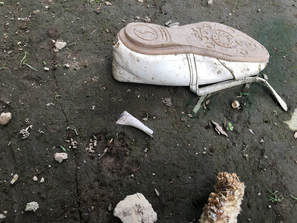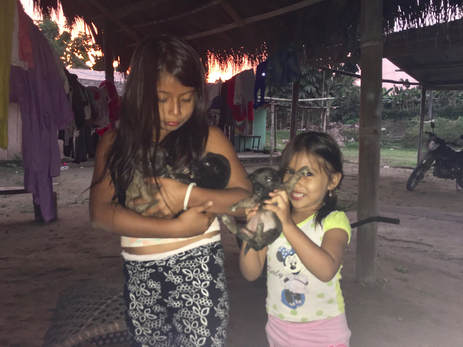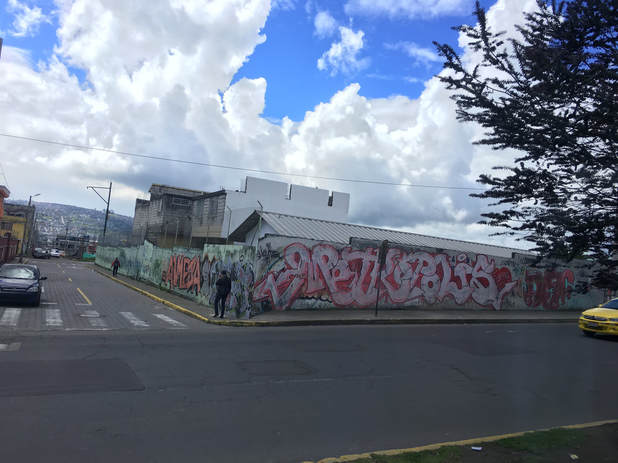|
Getting to the second destination on my adventure was no easy task. It started with my dragging my heavy duffle bag and backpack full of camera equipment all over Quito in search of the bus that would take me to the bus station. In the end, I took a cab. Then, at the bus station I was able to mangle my way through a conversation and purchase a ticket to Santo Domingo. Except the ticket I purchased was for a bus leaving at 10:50 a.m., and it was only 9:30 a.m. This glaring error was made even more apparent when a bus going to Santo Domingo rolled up at 9:40 a.m. and I couldn’t get on it. Everything worked out in the end and I took the scenic route to Santo Domingo for $3.75. My adventure didn’t end once I got to Santo Domingo. Instead, I had to start asking every taxi driver I encountered if they knew where Bua was (the indigenous community I was staying in). The first man didn’t know and waved me onto the next driver. He didn’t know either, but he knew a good thing when he saw it and wasn’t willing to wave me off. He called at least three different people asking them if they knew where Bua was, and none did. It wasn’t until a nice man on the side of the street walked up and said he knew about Bua. He gave me (aka my taxi driver) directions and since the man seemed to know what he was talking about, I finally hopped into the cab. I’d been told to have the driver drop me off at the school in Bua and then walk backward to the house I was going to be staying at. But when the driver asked a random teenager if ‘this was Bua’ and we received an affirmation, I asked the kid if he knew which house belonged to Christina. He said something in Spanish that I didn’t catch, but fortunately my driver did because he turned around and dropped me off in front of a sprawling property. I’d finally made it to my destination.  This was the first photo I took while walking around the 'backyard' (aka jungle) with the girls. This was the first photo I took while walking around the 'backyard' (aka jungle) with the girls. I keep calling Bua a community, but that doesn’t really describe my current location. In Spanish, we don’t refer to Bua as a ‘comunidad,’ but as a ‘comua’ or gathering. The difference being that Bua isn’t really a town or community in the Western sense of the word, but rather a geographical location in which many Tsa'chila families have made their homes. The Tsa'chila are a somewhat individualistic, although not in the same way as Americans. Instead, the Tsa'chila people live in large family groupings and are communalistic within those families, but not very community orientated outside of the family. Also, I found it highly interesting that I viewed them as communalistic within the family, but was then surprised when the children did differentiate between their abuela’s dog and their papa’s crops versus calling them ‘the family’s.’ If anything this just shows how limited my current comprehension is on the subject. I’m not an anthropologist, and a lot of these conclusions are based on only a few days worth of observations backed by information from the Yanapuma Foundation that has closely worked with members of the Tsa'chila, but this is my understanding thus far.  Yosenka, 8 (left), and Ashley, 4 (right) with three of the five puppies ranging from six months to so young they don't have their eyes open yet. Yosenka, 8 (left), and Ashley, 4 (right) with three of the five puppies ranging from six months to so young they don't have their eyes open yet. The family I’m living with consists of a set of parents, Christina and Franklin, a 15-year-old girl named Milena, a 13-year-old boy named Jesus, and two younger girls, eight-year old Yosenka and four-year-old Ashley. (Yes, my four-year-old host sister in Peru was also named Ashley). Frequent visitors, especially at meal times, include Franklin’s parents and various uncles. There are also numerous perros, perritos, gatos, gatitos, and muchos muchos pollos running around. I can’t really comment a lot yet on the daily lives of the family. Mostly because I’ve not really been allow in. I’m hoping with time I can gain their trust and build that bridge in order to deepen the communication. Right now, I’ve been relegated to a place among the children. I eat with the girls; I play with the girls; I have the same responsibilities as the girls, which is to say none. That being said, I’m the girls’ responsibility. They have to look after me and seek me out when it’s time for meals and hold my hand (literally) when we’re walking across rough terrain. None of this is to complain, rather, things I’ve noticed. I’m not expected to help cook or clean with the other women (although as far as I can tell neither is the other teenage girl – only Christina and the abuela), nor am I assigned the occasional light chore like the little girls. At the same time, when I appear, the girls are expected to stop what they’re doing and more or less cater to me. So even though it’s great fun, it’s also exhausting because the little girls are constantly off doing something; even when we’re sitting waiting for dinner they’re running back and forth and giggling. As far as I can tell, this is what the little girls would do every day even if I weren’t here. They explore their property, they swing in their hammock, they play with the numerous puppies and kittens. One thing that the girls seem to look forward too beyond their normal play is trips to the river. In the two days I’ve been here (at the time of this post) we’ve gone to the river twice. The river is where the Tsa'chila shower, wash their clothes, and sometimes even retrieve water for the home. I love swimming and nature, but I also love clean clothes and warm showers. Guess it’s a good thing this is an adventure! Next post: I take a trip to Santo Domingo with Franklin and Yosenka and visit the market.
Wendy
5/13/2018 10:25:34 am
I love that the girls have 'adopted' you and are certainly showing you a good time. Have you found out how often they have to play host to a visitor like you?
Reply
Your comment will be posted after it is approved.
Leave a Reply. |
AuthorMy name is Hunter and this the blog of my worldwide adventures. The purpose of this blog is to show that you can be a traveler, not just a tourist. Archives
March 2019
Tags
All
|
Proudly powered by Weebly
